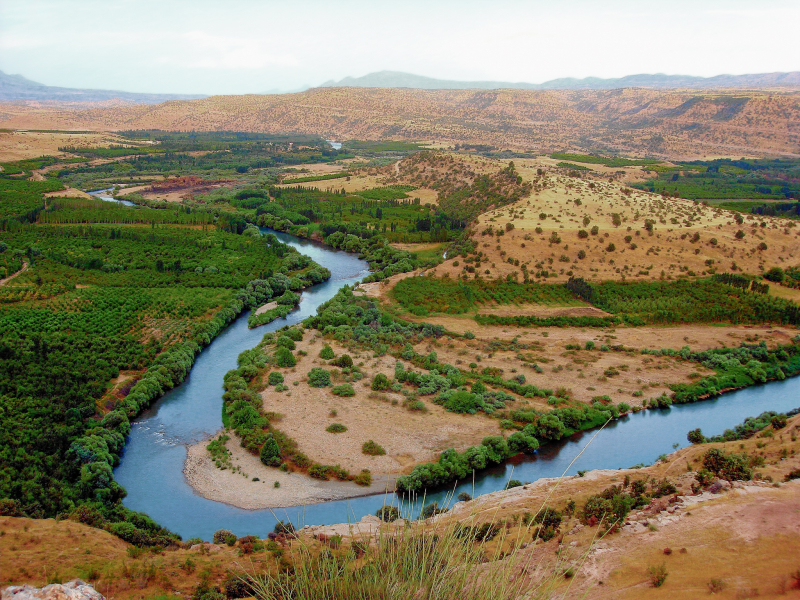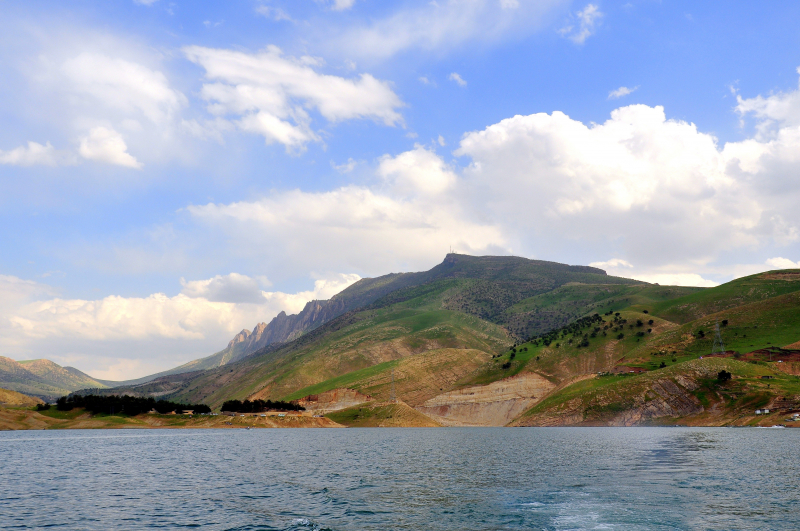Lower Zab

The Little Zab, also known as the Lower Zab, is an Iranian river that flows into the Tigris near Al Zab in Iraq's Kurdistan region. It has a length of about 400 kilometers (250 miles) and drains an area of about 22,000 square kilometers (8,500 sq mi). Rainfall and snowmelt feed the river, resulting in a high flow in the spring and a glow discharge in the summer and early fall. On the Little Zab, two dams have been erected to regulate river flow, provide irrigation water, and generate hydroelectricity. The Zagros Mountains have been inhabited since the Lower Palaeolithic, although the earliest archaeological site in the Little Zab valley, Barda Balka, is from the Middle Palaeolithic. Since then, human occupancy of the Little Zab basin has been documented.
The Little Zab rises in Iran's Zagros Mountains at an elevation of around 3,000 meters (9,800 feet) AMSL. The orientation of the major mountain chains that comprise the Zagros determines the flow of the Little Zab in its higher stages. Thus, the river travels through basins that are primarily lined along a northwest-southeast axis parallel to the major Zagros mountain chains, only to suddenly shift course where it passes through these mountains in tiny gorges. The Little Zab enters the plain south of Dukan, following a generally westward path before turning southwest upstream from the village of Altun Kopru and joining the Tigris near Al Zab. The Baneh River and the Qala Chulan are the two biggest tributaries that join the Little Zab upstream from Dukan. In the Ranya Plain, which is now partially submerged by Lake Dukan, a number of smaller streams joined the Little Zab.
Total Length: 249 miles









